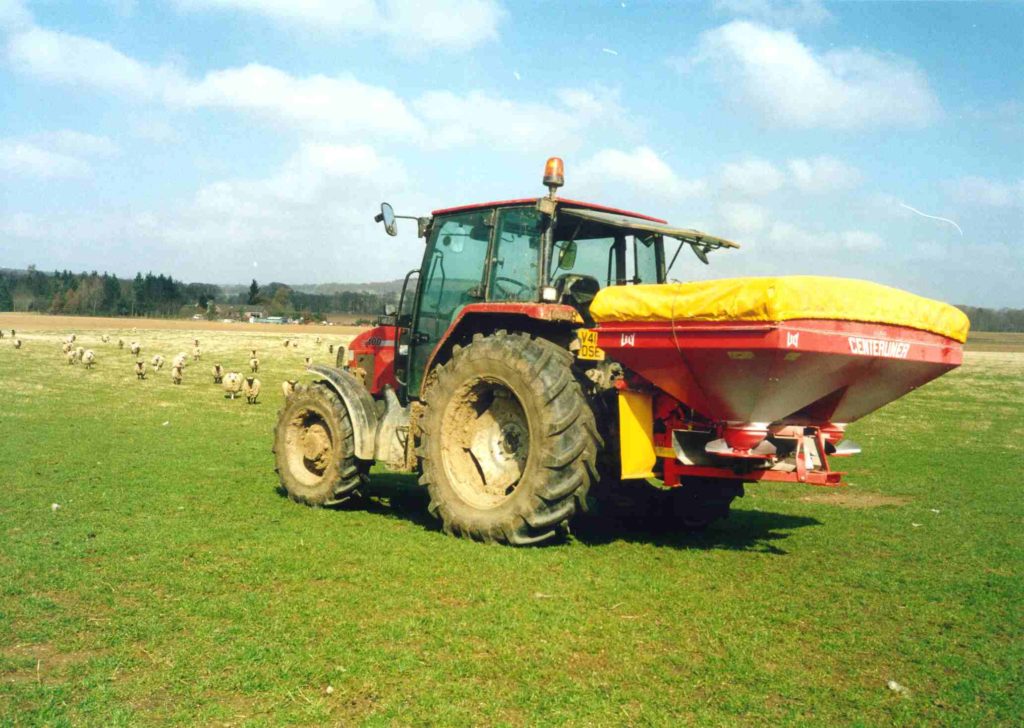Can I cut back on Nitrogen?
19 April 2022The last 12 months has seen unprecedented increases in costs of inputs to farmers and the immediate outlook could see markets and supply chains in chaos around the world.
For cereal farmers in 2022 one of the big decisions will be how much Nitrogen to apply. In the past this hasn’t been a big issue with rates dictated by market requirement, NVZ guidance or even simply trying to apply as much as possible to achieve maximum yield without the crop going flat – price hasn’t really been seen as a limiting factor. The price hikes seen in the past 12 months are a game-changer however – no longer can maximum yield be the target but attention must focus on obtaining the best margin. While cereal prices have risen to historic highs, fertiliser, and nitrogen in particular, have increased at a much faster rate, tripling in value in the last 12 months. Looking further ahead, the volatility relating to gas prices and supplies means that farmers need to be prepared to adapt to the prices for the foreseeable future.
How should farmers respond- is it as simple as just cutting back “a bit”? Put simply, the answer is no, and the answer will be different for each business. Finding the answer is much more complex than it sounds. Finding the right rate will be determined by having a good grasp of your cost of production, knowing your final market, the estimated price of grain and knowing your expected yield not only across the farm but for individual fields however you need to know what your starting point is. Scottish growers can find this information in FAS TN731, which can provide a Nitrogen recommendation based on several factors including soil type, yield, rainfall and end market. Where yield adjustment is considered, it should be realistic and must be based on historical results and in NVZ areas, growers should be aware of the guidance regarding using this method.
For some, especially those applying high rates of Nitrogen and not getting high yields, there is scope to look to reduce N rates, as nitrogen utilisation is clearly poorer than on other farms. Identifying the limiting factor- e.g. pH or compaction, should be prioritised. Indeed, this approach can apply to all farms, in fields where yield is expected to be poorer, whether based on historical performance or even on growing crop potential, a reduction in N rate will have less effect on yield. As always farms in NVZ areas should follow the appropriate guidance and allowances for Nitrogen from other sources e.g. FYM or cover crops should also be factored in. It is also important that growers try to utilise as much of the Nitrogen applied as possible. Measures include ensuring pH is at the optimum, macro and micronutrients are in adequate supply, spreading equipment is serviced with the right settings applied and that spreading occurs in optimum conditions to a crop that is growing and isn’t under stress.
Going forward it will also be more important than ever to know what it costs to grow your crop and what your margin is per ton. This rhetoric can seem like a broken record but here’s why it’s never been more important- especially if you have bought your fertiliser in the autumn and winter and experienced the worst of the rises. For most, the rise in fertiliser prices will increase production costs by around £200 per hectare (£80 per acre). What effect does this have on cost of production? For a farm growing spring barley with production costs of £1000 per hectare (£400 per acre) in 2021 the implications of the fertiliser price hike are shown below.
|
Yield (t/ha) |
|||||
| Year |
Cost of production per hectare (£) |
5 | 6 | 7 |
8 |
| 2021 |
£1000 |
£200 | £167 | £143 |
£125 |
| 2022 |
£1200 |
£240 | £200 | £171 |
£150 |
|
Increase in COP per ton |
+£40 | +£33 | +£28 |
+£25 |
|
From the table it is clear that the increase in price will affect all farmers however these effects will be greater felt by those with lower average yields. The table also suggests that for growers where the yield expectation is higher, the forecasted grain price may have gone up enough to cover the increased costs. For those growers who know their costs, average yields, and have either locked in or expect to receive grain prices higher than 2021, the overall effect on budgeted margin may be small or indeed they may even be confident on increasing their margin on the year. In terms of nitrogen rate for these growers – if it ain’t broke, don’t fix it may well be the order of the day. While it could be argued they could trim N rates slightly – they have put themselves in the position to make an evidence-based decision.
Sign up to the FAS newsletter
Receive updates on news, events and publications from Scotland’s Farm Advisory Service

